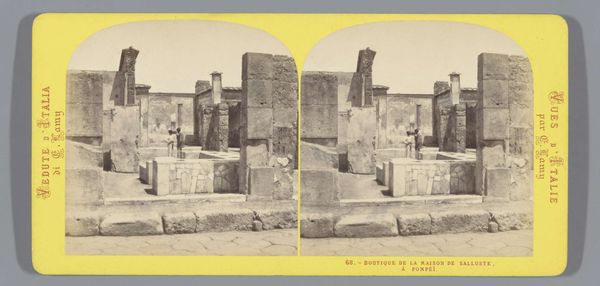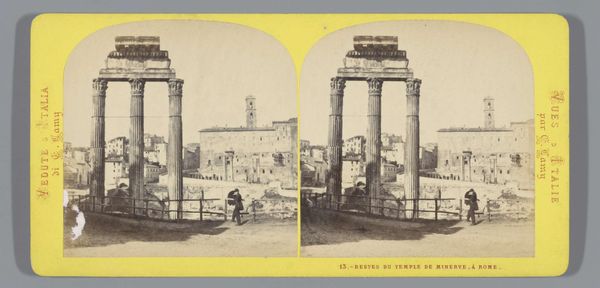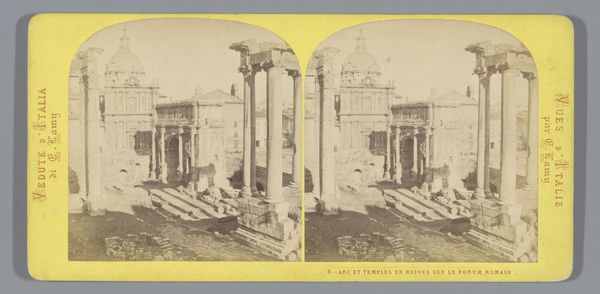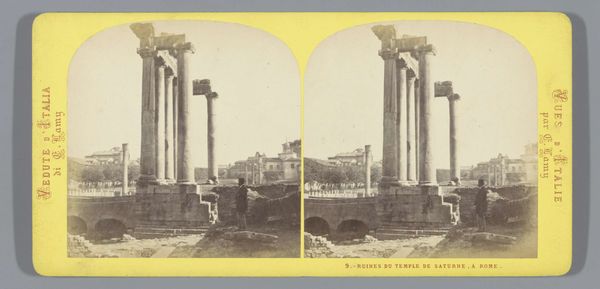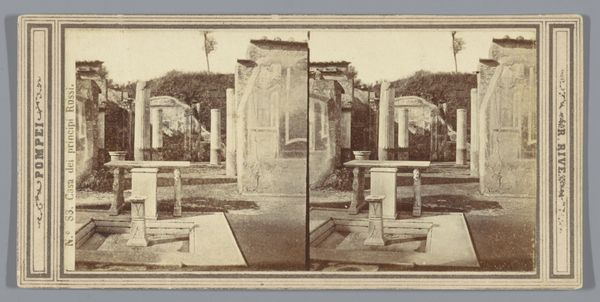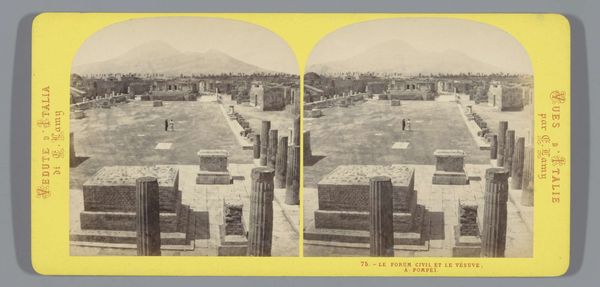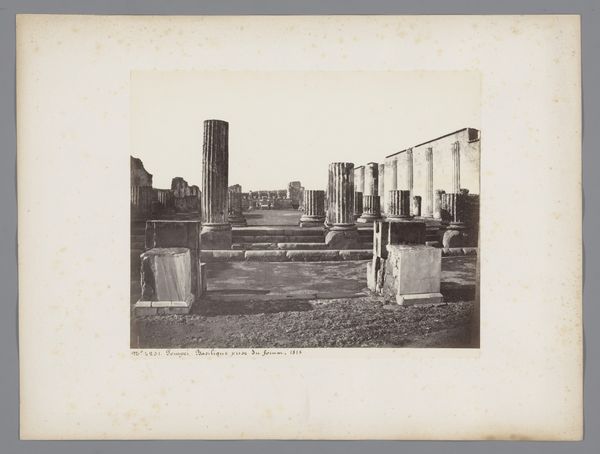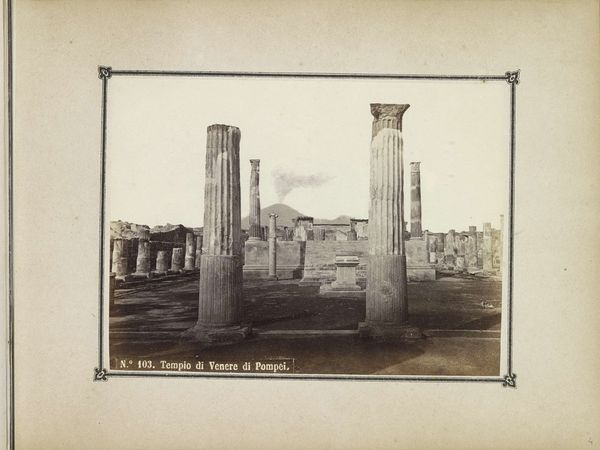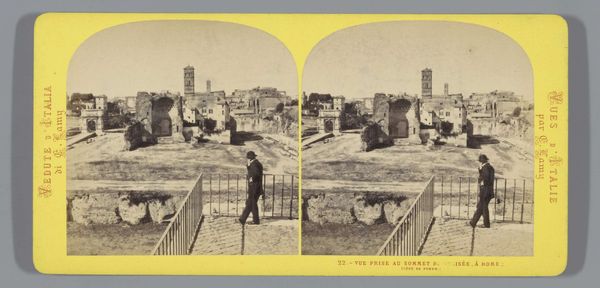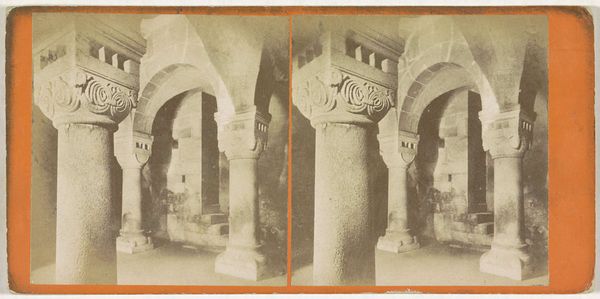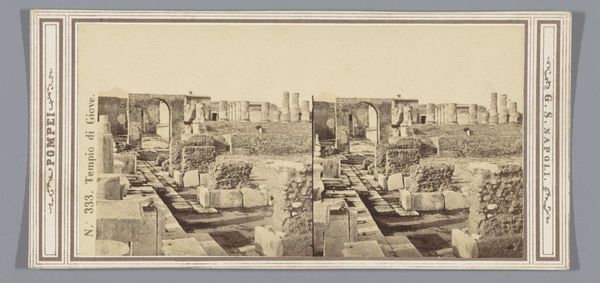
print, photography, albumen-print, architecture
# print
#
landscape
#
photography
#
ancient-mediterranean
#
column
#
albumen-print
#
architecture
Dimensions: height 87 mm, width 178 mm
Copyright: Rijks Museum: Open Domain
Curator: There's a palpable sense of suspended time in this stereo photograph by Ernest Eléonor Pierre Lamy, entitled "Zuilengalerij langs het Forum van Pompeï," dating from between 1861 and 1878. What are your immediate thoughts? Editor: An echo, I'd say. The worn stone, bleached by time and tragedy, certainly evokes a solemn grandeur. There's a strong, almost overwhelming, impression of loss here. Curator: Loss is a powerful entry point. Think of Pompeii as more than just a ruined city; it's a mirror reflecting our own mortality and the ephemeral nature of civilizations. The albumen print captures a very particular texture of decay. Do you see that in the fluted columns, still standing defiant yet bearing the marks of time? Editor: Absolutely. And look at the stereoscopic format itself—doubled, yet not quite identical. It amplifies the idea of past and present overlaid, history constantly repeating, never quite resolving. This particular photograph likely served a booming tourism trade at the time; offering armchair travel and a taste of 'authentic' antiquity. How staged, or subjective, might such a document have been? Curator: Precisely. Photography here straddles documentation and spectacle, crafting an experience, not just a record. It uses a modern technology to bring a lost world back to life, however imperfectly. And the repetition of forms, those steadfast columns against the empty forum... They serve as constant, unavoidable symbols of Roman power—enduring through cataclysm. Editor: Indeed, but notice too, that each column differs. Imperfect, each one a little asymmetrical. The individual juxtaposed with collective memory or imposed authority… Curator: Good point. What feels powerful, though, is how Lamy used this visual technology to grant viewers in the 19th century—and now—a sort of tangible connection to an ancient narrative. It touches on core myths about glory, disaster, remembrance… Even as those associations are filtered through a 19th century lens. Editor: So while we see Roman civilization in ruin, we also see nineteenth-century sensibilities reflected back to us? A carefully packaged view of the sublime perhaps, tailored for consumption. Curator: Precisely! This single image reminds us how we construct meaning out of fragments, how we use art and artifacts to reconcile our place in time. Editor: A potent testament, then, not just to Pompeii, but also to how history and memory continuously construct each other.
Comments
No comments
Be the first to comment and join the conversation on the ultimate creative platform.

